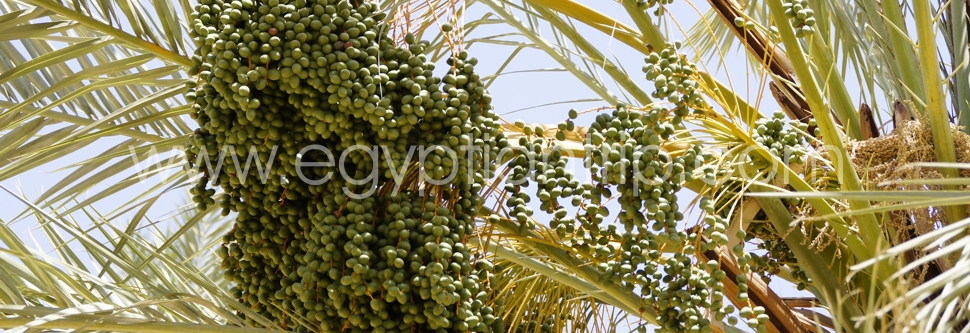Tourism in Siwa:
Therapeutic in Siwa
Siwa is famous for its hot white sand that has some properties that make it able to cure a lot of rheumatismtic dieses, Arthritis and spinal pain. Regarding the hot water wells in Siwa, the most important among them are: Cleopatra Bath, Arayes, Moulol, and Hamawat.
The water in these wells is divided into two types: normal hot water and sulfurous hot water which is used internationally in curing many skin dieses. It is also used in curing some respiratory system problems.
Dakrour Mountain in Siwa contains some radiations that help in curing rheumatism, polio, Psoriasis, and digestive system illnesses. Tourists from all over the world come to this mountain in July and August every year to be cured from many health problems.
What to see in Siwa?
The old city of Shaly
Shaly is the old city and fortress in the middle of the city of Siwa Oasis. The word Shaly means the city or the town in the Siwian language. Shaly consists of a high a plateau with two tops one at the Eastern edge and the other at the Western edge. On top of this plateau, a lot of houses were built in the "Karshif" style, the ancient construction style in Siwa, it built from a material known as “kershef” (salt rocks from the local salt lakes and mud), the ruins are subject to additional disintegration after each rainfall.. In the past, there was a high wall surrounding the city of Shaly to protect it against any outside attacks and this wall had only one opening. The streets of Shaly are narrow and the doors of the houses are very small. The city was designed that way to protect it from the attacks of the Berber and the Bedouins who live in the desert.
The fortress in the city was built out of mud bricks and it was constructed in 12th or 13th century to protect the city when there was a situation of chaos in Roman period and tribes in the western desert used to attack one another in order to get food and drink.
Gebel El-Mawta:
Gebel El-Mawta in Arabic means Mountain of the Dead; it is a cone shaped mount a little to the North of Shali Fortress, and it is a Conical hill with a height of 50 meters.
dotted with tombs from the 26th dynasty and the Ptolemaic period. Many of these tombs are still very well preserved. Moreover, from Gebel El-Mawta, you can catch amazing views of Siwa Oasis.
The most important tomb to see is that of Si Amun, which is sometimes referred to as the most beautiful tomb in the Western Desert. It belonged to a wealthy Greek who was a follower of the Ancient Egyptian religion. The tomb is well preserved and the reliefs on the wall are stunning, make sure to notice the scene depicting Goddess Nut standing by a sycamore.
Another tomb with interesting reliefs is the Tomb of the Crocodile so called due to the image of a yellow crocodile symbolizing the God Sobek, it is a three room cave-like structure; the owner of this tomb has not been identified to this day. While visiting Gebel El-Mawta another tomb that should not be missed is that of Niperpathot, the reliefs in this tomb are breathtaking, painted out of the red pigment used in Siwan pottery to this day. It is a large tomb where the sarcophagus lies in the ground of the burial chamber.
Gebel Dakrour:
Around 3 km south east of Siwa stands Gebel Dakrour, the Dakrour Mountain, which has been renowned for the healing qualities of its hot sands since ancient times, as well as for being a major source of the red pigment used in Siwan pottery. People come from all around Egypt and the world during the summer months to be interred in sand baths which have properties of healing rheumatism. The sand bath lasts approximately 20 minutes and you are buried up to your neck in the hot desert sand; the process is usually repeated for any aching part of the body for 3 to 5 days. The therapy is stunning; it has almost a magical effect, rheumatic and arthritic pains will be greatly dissipated. After the heat of the sand you will need a few hours to recover, it is recommended that you sit in a shady place and drink tea. Many of those who experience the healing properties of Gebel Dakrour’s sand baths return time and time again to heal their pains.
Temple of Amun:
Also known as the Temple of Umm Ubayd, this temple was once joined with the nearby Temple of the Oracle by a causeway. Both temples are dedicated to the God Amun and rituals to do with the oracle involved both sanctuaries. The temple of Amun was built in the 30th dynasty by Nectanebo II and – sadly – it is mostly destroyed. In the late 1890’s the governor of Siwa used gunpowder to demolish the temple in order to utilize the stones to build the local police station and other buildings. What’s left of it today is a wall covered with ancient inscriptions.
Temple of the Oracle:
Located 4 km east of the present town of Siwa, the Temple of the Oracle is believed to have housed the famous Greek oracle of Jupiter Amun, to which Alexander the Great headed directly when he came to Egypt for the first time in 331 BC. Reputedly, it is believed that the Macedonian leader asked the oracle if he was going to “rule the world,” legend has it that the answer was “yes, but not for very long.” The temple has a great vestibule and forecourt.
Nearby, south of the temple, you can reach the temple of Amun which dates back to the 30th dynasty.
|
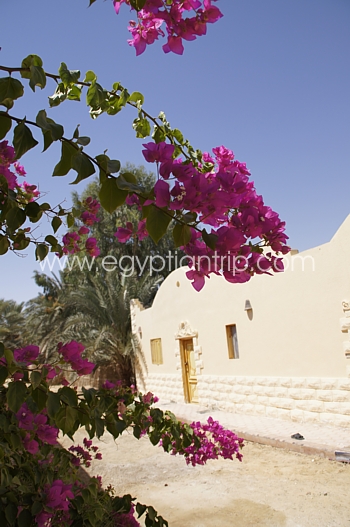
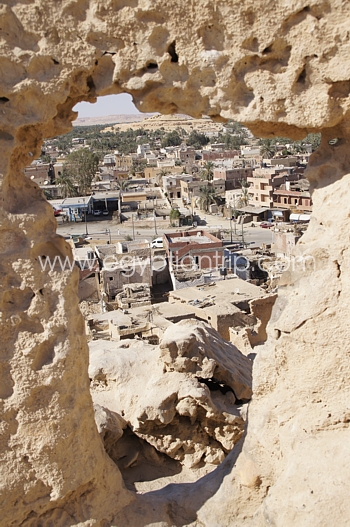
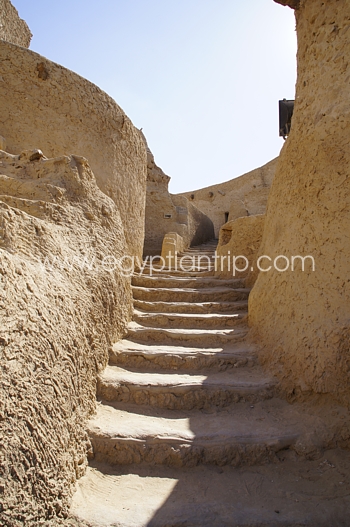 |
Siwa House Museum:
Located in a traditional Siwan house, the museum boasts traditional Siwan objects such as silver jewellery, music instruments, wedding costumes, baskets and ceramics. Inspired by a Canadian diplomat who feared that Siwan culture and its mud-brick houses would disappear someday; the small but interesting Siwa House Museum was built to preserve and display artifacts depicting the various aspects of the Siwan life.
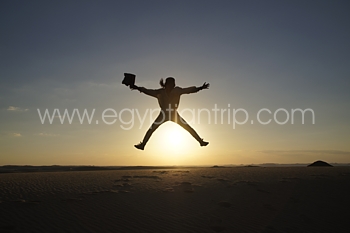 Fantasy Island: Fantasy Island:
Another favorite bathing spot for locals and tourists in Siwa is Fatnas Island. Also known as "Fantasy Island," the spot is located 6 km from Siwa Town on the salt lake of Birket Siwa in a beautiful surrounding of palm trees and beautiful scenery. There’s even a small café nearby from where you will be able to watch an amazing sunset while having tea or a cold drink.
Cleopatra's Pool:
One of the most famous attractions in Siwa is Cleopatra's pool, a stone pool fed by a natural hot spring, where the Egyptian queen herself is said to have swam on her visit to Siwa. Tourists have all been doing the same for years now; after all, a nice swim is so refreshing after a hot summer day tour!
You will find a cabin nearby where you can change into your bathing suit but bear in mind that women should give more thought to their swimming attire; the local men aren’t used to the sight of a woman in a swimsuit. A tee-shirt is advised.
El Arag:
Discover an uninhabited oasis in the midst of magnificent dunes, hidden from the south by massive limestone cliffs. Quench your thirst after a long safari in the charming spring located in the middle of the oasis. El Arag has breathtaking views of the surrounding desert. The oasis also boasts rich archaeological remains; artefacts, shards of pottery and two rock-cut tombs that have astonishing engravings. Note the Ancient Egyptian frieze of a cobra and sun disk on a tomb, the plant designs on the wall and the stars on the ceiling.
Olive and Palm Groves:
Surrounded by lakes that are too saline to support fishing, Siwa has been famous for its olive groves and palm gardens since ancient times. The oasis boasts more than 300,000 palm trees, 70,000 olive trees as well as many fruit orchards. The area has thus become very attractive to different sorts of birds, such as falcons and quails. Strolling through the rich palm groves, you will soon be convinced that Siwa’s main attraction is its serene ambiance.
Activities to do:
Safari Into the Great Sand Sea:
Covering over 72,000 square kilometers and forming the northern edge of the Sahara, the Great Sand Sea is the world’s third largest dune field. Siwa is the northern gateway and the perfect starting point for a safari expedition into a truly magical landmark. Experience the infinite tranquility of endlessly undulating dunes before stopping at one of the desert camps for a magical night under the stars.
The Great Sand Sea is one of the largest dune fields in the whole world and contains some of the largest recorded sand dunes, one of which is 140 km long!
Sand Boarding in the Great Sand Sea:
Surf the giant dunes of the Great Sand Sea near Siwa. Travel into the desert for what is thought to be the best dune surfing location in the world with seriously smooth and steep dunes reaching heights of 140 metres; and if that’s not enough there are breathtaking views of the desert landscape as you glide. You can head out to the Pacific Ocean of sand boarding either on a camping and boarding trip or a daytrip provided you have a professional guide. There are dunes of all shapes and sizes so everyone will find the perfect dune for their surfing experience.
Quad biking in the Western Desert:
Take a quad bike tour across a beautiful landscape surrounding Siwa Oasis. You'll find several places in the oasis that rent out quad bikes, so take a ride around and watch the sun set or rise and change the colours of the desert terrain. No experience is needed for this fun activity; just make sure you take a scarf and sunglasses or goggles to protect your face from the sand, and that you are accompanied by a guide.
Bicycle:
Bicycles are the best way to explore Siwa and surroundings, you can discover the oasis & get the local action with Siwian comunity, enjoy the natural around your eyes.
Donkey cart:
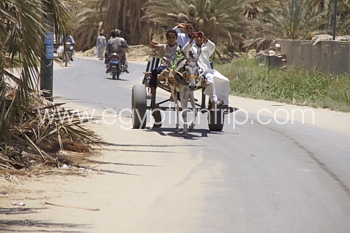
Donkey cart drivers are mostly children who have been riding donkeys for several years.
Shopping (Siwan Crafts):
Siwa has the best craft tradition in any of the Western Desert oases. There, you can buy unique ceramic Tajine dishes.
- the traditional pyramid.
- like Saharan cooking pots.
- handmade, beautifully decorated and fired in bread ovens, as well as embroidered traditional Berber wedding dresses.
- Crafts.
- Jewelry.
- Wedding Dresses - Famous for red, orange, green, and black embroidery, embellished with shells and beads - 250LE to 500 LE.
- Baskets.
- woven from date palms.
Shopping Respect:
Women should not wear clothing that reveals the shoulders, breasts, or legs.
Public displays of affection are prohibited.
Alcohol should not be consumed in public.
Male travelers should avoid contact with the local women as doing so is considered a rude and hostile act.
|
